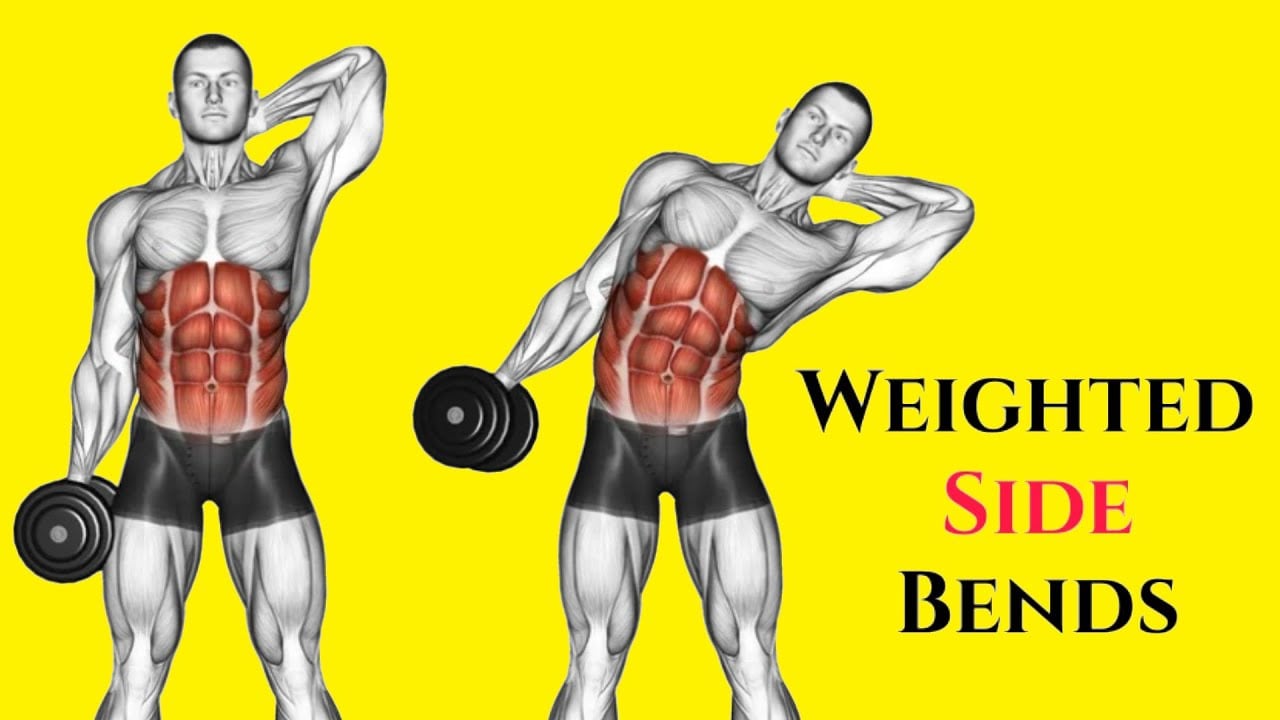Weighted side bends are a great exercise for targeting your core, particularly the oblique muscles. You can add this move to your routine to tone and shape your waistline.
Not only do weighted side bends help sculpt your obliques, but they also boost your back’s stability, which can help prevent injuries and protect your lower back during other activities.
It also helps improve your spine’s lateral flexion (side-bending movement), contributing to better functional mobility overall.
However, form is everything when it comes to this exercise. Use proper techniques to get the best results and avoid getting hurt.
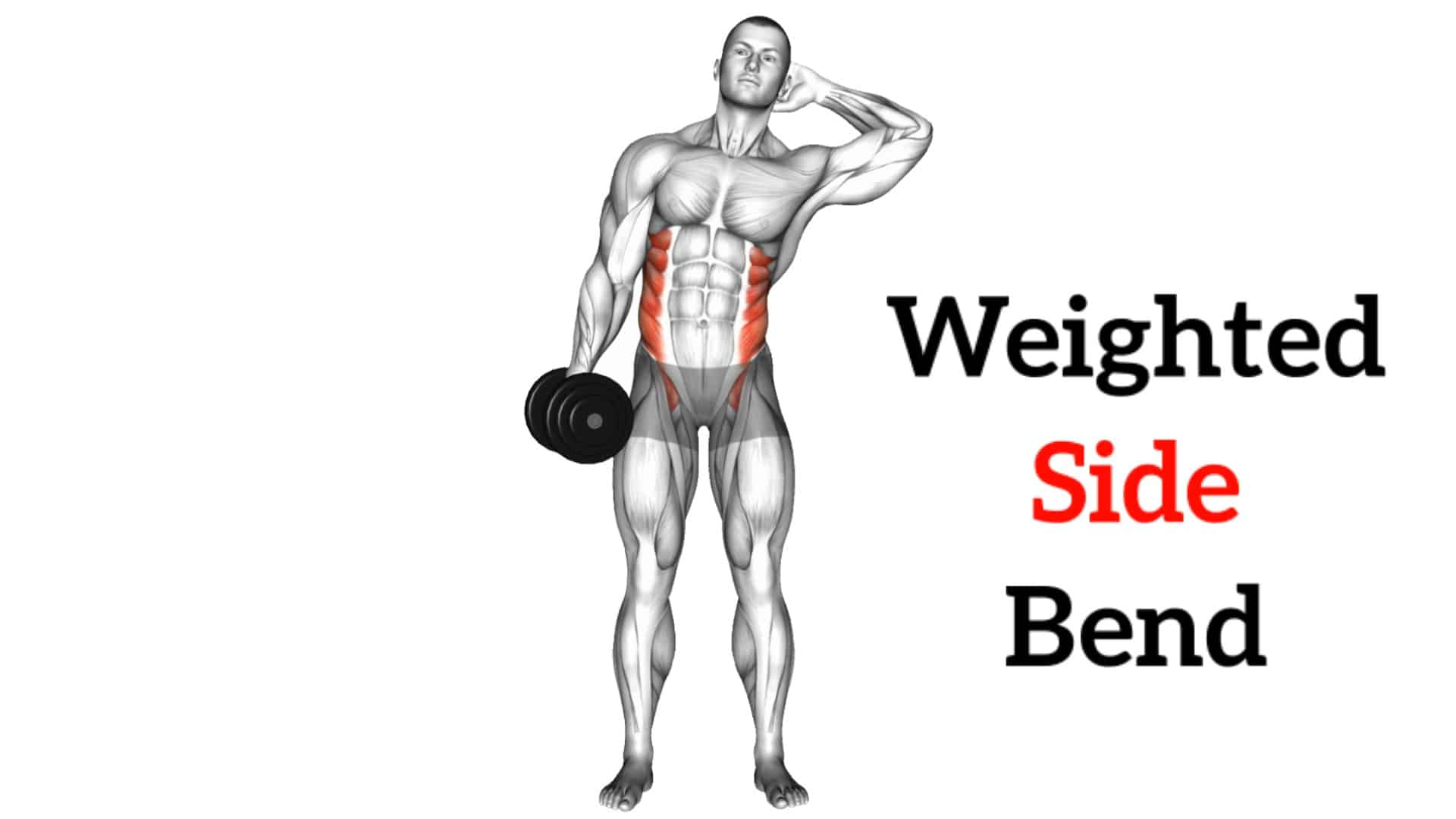
Weighted Side Bends Muscles Worked
The weighted side bend works the obliques—the two layers of muscles Obliques, (the external and internal obliques) at each side of the waist.
The weighted side bend doesn’t work just the obliques. It also heavily hits the Abs, Serratus anterior and the quadratus lumborum.

How To Do Weight Side Bend
- Stand with your feet shoulder-width apart while holding a dumbbell, plate, or kettlebell with a neutral grip in your one hand. Your arm should hang at your side.
- You can place your free hand behind your head.
- Your posture should be tall, with your shoulders over your hips.
- Maintain a neutral head and neck position throughout the exercise.
- Bend sideways at the waist to the left as low as possible, using your oblique muscles to pull your torso down.
- Hold for a second and return to the starting position.
- Complete the desired number of reps and repeat on the other side.
Tips and Form
- Keep the weight close to your side, your elbow very slightly bent, and your hips still.
- To work the oblique muscle, perform these exercises slowly and steadily.
- Make sure to keep your body stable and avoid leaning forward or backward during the exercise.
- Avoid using a heavy dumbbell for this exercise. Large, overdeveloped oblique muscles will make your waist appear bulky.
- After an intensive set of side bends, take two or three minutes’ rest before working your other side so that your performance on the latter doesn’t suffer.
- Keep your core engaged throughout the movement.
- Concentrate on the stretch and contraction of the oblique muscles throughout the movement.
- Keep your knees and elbows slightly bent instead of locking them out.
- Take an adequate amount of rest in between sets.
- For the weighted side bend, 2-4 sets of 8-25 reps, varying the reps between workouts, can be sufficient.
Weighted Side Bend Variations
Weighted side bend exercises come in different varieties. Oblique twists are versatile and easy to perform. In fact, there is no one-way to perform a side bend.
Each side bend is unique and will keep any workout routine interesting.
You can easily and effectively do the weighted side bend with a dumbbell, plate, Barbell, and cable Machine,
1. Dumbbell Side Bend
If you’re looking for straightforward weighted side bend exercises to add to your routine, dumbbell side bend is a great staple exercise to get you started.
The dumbbell side bend is effective at targeting the internal and external obliques, strengthening the lateral flexion of your spine, improving spinal mobility, and helping to develop a strong and stable core.
With a dumbbell, you can easily adjust your range of motion, allowing for a more natural and controlled side bend. Plus, dumbbells are more accessible and easier to handle compared to larger weights like barbells or weight plate
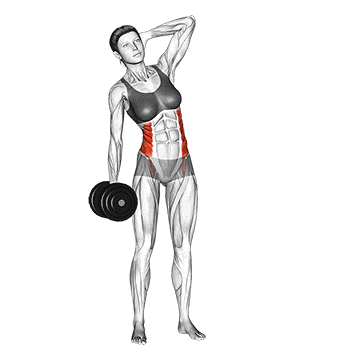
2. Cable Side Bend
The cable side bend is one of the best, and my favorite variation of the side bend.
It provides constant tension throughout the entire movement and allows you to stay within an active range of motion for your oblique muscles.
Another cool thing? You can play around with angles. Just by stepping closer or further from the cable machine, you’re hitting your obliques in different ways. It’s like giving your muscles a new challenge each time.
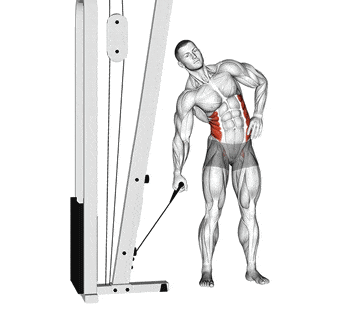
3. Standing Barbell Side Bend
The barbell side bend is effective at targeting obliques, strengthening your spine, improving spinal mobility, and helping to develop a strong and stable core.
Holding a barbell across your shoulders forces both sides of your core to work harder to keep you balanced and stable. This extra challenge helps strengthen your obliques more effectively.
Unlike dumbbells, which you do one side at a time, the barbell hits both obliques simultaneously. It’s a time-saver and helps keep things balanced.
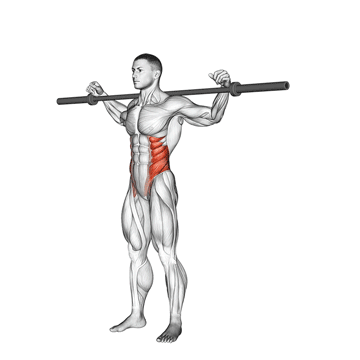
4. Plate Side Bend
Finally, if you’re looking for one more weighted side bend workout, try the plate side bend.
All you need is a weight plate, and you’re good to go. No fancy equipment is required. It’s perfect for home workouts or when the gym is packed and you can’t get to the cable machine.
The shape of the plate. It’s not as easy to grip as a dumbbell, so your forearms and grip strength get a little bonus workout.
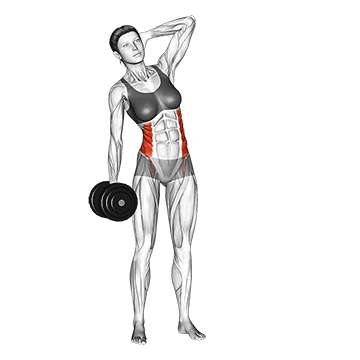

Manish is a NASM-certified fitness and nutrition coach with over 10 years of experience in weight lifting and fat loss fitness coaching. He specializes in gym-based training and has a lot of knowledge about exercise, lifting technique, biomechanics, and more.
Through “Fit Life Regime,” he generously shares the insights he’s gained over a decade in the field. His goal is to equip others with the knowledge to start their own fitness journey.

